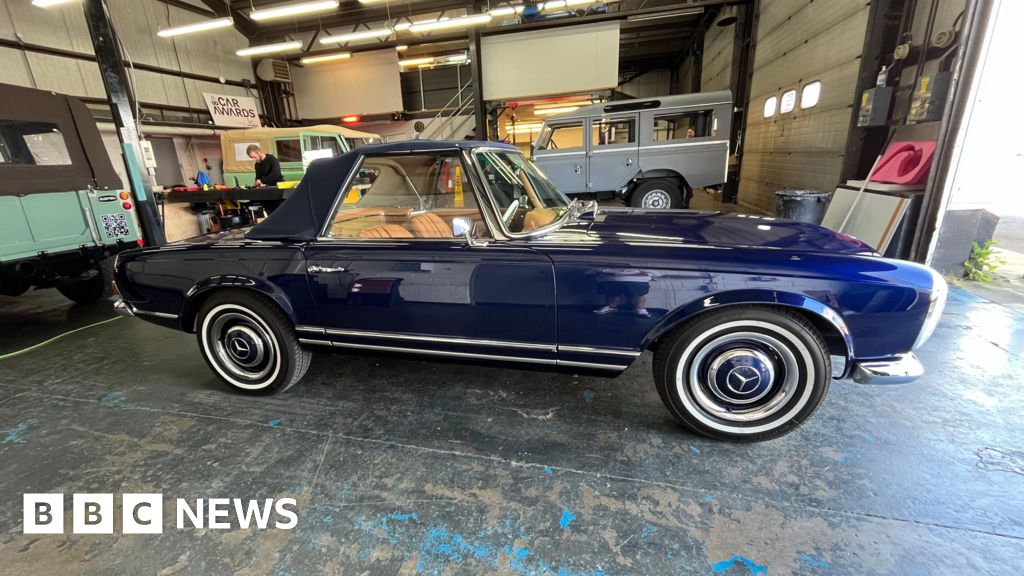Classic cars ‘upcycled’ to electric

He is now building six Land Rovers for a client in Dubai. Another is in the Hamptons outside New York.
"Buyers are usually wealthy people who love the idea of something that is now fully sustainable and reusable," he explained.
"It's the ultimate upcycling."
Chief engineer Tony Fong demonstrated the controls on the Pagoda for me.
"The gearstick has been modified," he said.
"Pull towards you for drive, push away for reverse. The gauge for the fuel tank now shows battery capacity.
When this was built there were no hazard lights. We are engineering those in."
Fashionable restaurants
What is it like to drive? On the former airfield's perimeter road, it is much noisier than newer electric cars.
It is a work in progress, full of quirky character.
I've driven a lot of classic cars, and this feels very different.
Because it is battery-powered, it has more performance now than when the original petrol car was built. It has a smaller range than a modern mass-produced car, and it charges more slowly too.
There are no seatbelts, no airbags or traction control. But it will be fitted with air conditioning to suit today's clients.
Such luxury was not available 60 years ago.
The car is no motorway mile-muncher. It is more likely to be seen in Instagram poses outside fashionable restaurants or summer parties than on a touring holiday.
With a total price tag above GBP500,000, this is a niche market. Most will be sold in North America and the Middle East.
Mr Lunny believes he could build 100 cars a year with his 20 staff.
Beyond that, the ambition is to sell his bespoke battery and drivetrain technology to other carmakers.